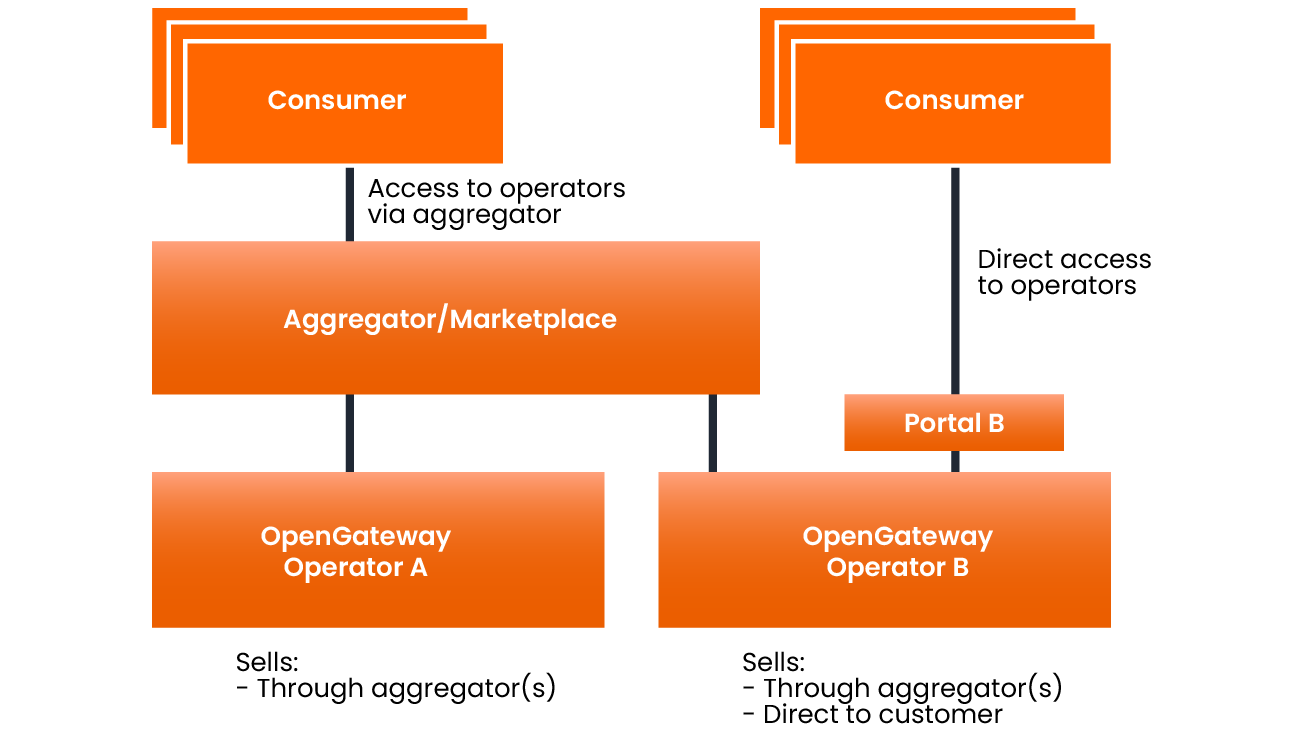
ACL Digital
The Future of Network-as-a-Service: GSMA’s Open Gateway Initiative and The CAMARA Project
As technology advances at an unprecedented rate, the telecommunications industry faces increasing demand for seamless connectivity, efficient network management, and rapid deployment of new services. To address these challenges, industry leaders are turning to APIs (Application Programming Interfaces) as a critical enabler of flexibility, scalability, and integration. The GSMA Open Gateway initiative and the CAMARA project stand out.
The primary goal of the CAMARA project is to transform traditional telecom networks into programmable platforms. For Communication Service Providers (CSPs), it represents a significant business opportunity to generate new revenue streams and better monetize investments in fiber, edge computing, and 5G. For third-party developers, it removes the constraints of traditional over-the-top, best-effort service delivery approaches, offering new capabilities to enhance user experiences and contribute to the digital ecosystem with innovative services.
Objectives of the CAMARA Project
Standardization of Network Interfaces
One primary objective is establishing common APIs to create a universal framework for accessing network capabilities, ensuring consistency and interoperability across different operators and platforms. By initiating standard protocols and interfaces, CAMARA aims to reduce the fragmentation and complexity that often hinder seamless communication and integration in the telecommunications ecosystem.
Enhanced Operational Efficiency
By leveraging standardized APIs and modern development practices, CAMARA improves the efficiency of network operations. It leads to streamlined processes, reduced complexity, and better resource utilization, ultimately enhancing overall operational performance.
Accelerated Service Deployment
The project aims to enable faster deployment of new services and technologies by providing pre-built, standardized APIs. This rapid deployment capability allows telecom operators to respond quickly to market demands and customer needs, thereby gaining a competitive edge and enabling faster innovation cycles.
Cost Reduction
Simplifying the integration process and reducing the need for bespoke solutions lowers operational costs for both operators and developers. Standardized APIs eliminate redundancy and streamline operations, resulting in significant cost savings. Lower operational costs can translate into more competitive end-user pricing and better margins for service providers.
Fostering Innovation
The standardized APIs developed under the CAMARA project are flexible and scalable, encouraging innovation within the industry. By providing a robust framework for developers and service providers, CAMARA aims to spur the creation of new, innovative services and applications that can drive growth and enhance customer experiences.
Improved Customer Experience
With APIs that are easy to use and integrate, developers can focus on creating better user experiences. Enhanced capabilities and seamless interactions lead to more satisfying and engaging services for end users.
Enhanced Security
Ensuring the security and integrity of network operations is a crucial objective. CAMARA APIs are secure by design with robust security features to protect against cyber threats and ensure the confidentiality and integrity of data and communications. This focus on security builds trust among users and protects sensitive data.
Support for Emerging Technologies
The project aims to support integrating and deploying cutting-edge technologies such as 5G, IoT, and edge computing. By providing APIs compatible with these technologies, CAMARA helps telecom operators stay ahead of technological advancements and capitalize on new opportunities.
The CAMARA project aims to drive transformation in the telecommunications industry by focusing on these objectives, promoting efficiency, innovation, and superior service delivery. These APIs provide a standardized way to access and control mobile network resources, enabling automation, improving efficiency, and fostering innovation. Here’s how network APIs offer a solution:
CAMARA takes the concept of network APIs to the next level by creating a unified framework for network APIs. Its role in the telecommunications ecosystem is pivotal. One of the standout implementations of CAMARA APIs is the collaboration between Intraway and Telecom Argentina. This joint venture exemplifies how CAMARA APIs can be leveraged to transform network operations and deliver superior service.
CAMARA APIs Principles
Several key principles have been established for the GSMA Open Gateway’s APIs to ensure its success and widespread adoption.
Scale
APIs need to be widely adopted by customers and integrate seamlessly into their existing ecosystems. It means providing a rich set of functionalities, libraries, and tools developers are accustomed to using.
Global Reach
Network operators should implement these APIs to offer a consistent developer and service experience worldwide. This global footprint facilitates the effortless portability of applications across different telco platforms, making it easier for services to replicate and scale.
Simplicity
Potential third-party API consumers often need more telco expertise and demand easy-to-use APIs that require minimal coding effort. Therefore, APIs should hide unnecessary telco complexity and focus on developers’ business and operational needs.
Security and Privacy
API consumers must trust these APIs from a technical security and regulatory compliance standpoint. It includes adherence to data protection regulations like GDPR, ensuring that APIs are secure by design, and using industry-approved standards.
Demand-Driven and Customer-Oriented
APIs should be developed in response to customer needs and through collaboration with customer communities. This demand-driven approach ensures that APIs are relevant and valuable to their users.
Different Relationship Models for CAMARA APIs
To ensure maximum availability and adoption, CAMARA APIs can be directly presented to the end user via an aggregator.
In the aggregator model, the marketplace enables a single channel for tenant applications to gain access to capabilities from multiple CSPs without the customer needing to set up a contractual relationship with each of them. This marketplace may optionally enrich/combine CAMARA APIs with other functionalities or abstract them even more, to facilitate third-party use and adoption.
The Aggregator function plays a crucial role in simplifying and optimizing network operations. Aggregators act as intermediaries that consolidate and manage interactions between different service providers. CAMARA APIs enhance the aggregator function in several ways:
Unified Interface
Aggregators can use CAMARA APIs to provide a unified interface for accessing various network resources, simplifying the process for service providers, and ensuring consistent performance.
Streamlined Operations
By leveraging standardized APIs, aggregators can streamline operations, reducing the complexity of managing multiple systems and protocols.
Scalability and Flexibility
CAMARA APIs enable aggregators to scale their operations quickly, accommodating the growing demands of modern telecommunications networks.
Enhanced Security
CAMARA APIs’ robust security features help aggregators maintain network integrity and protect against cyber threats.
Symphonica and ACL Digital: Innovating Telecommunications with CAMARA APIs
Symphonica and ACL Digital have partnered to deliver innovative solutions leveraging CAMARA APIs to serve telecommunications customers effectively. The collaboration showcases the potential of CAMARA APIs to drive industry transformation. Symphonica specializes in the orchestration and automation of network operations. Integrating CAMARA APIs allows Symphonica to offer its customers more efficient and reliable solutions.
ACL Digital brings deep technological expertise to the collaboration. Their knowledge of telecommunications standards and innovative solutions complements Symphonica’s offerings. ACL Digital excels in customizing and integrating solutions to meet specific customer requirements. By leveraging CAMARA APIs, they can deliver tailored solutions that address unique challenges.
The collaboration between Symphonica and ACL Digital ensures that telecommunications customers receive cutting-edge solutions that enhance service delivery and operational efficiency. By leveraging CAMARA APIs, the partnership fosters innovation and provides the flexibility to adapt to evolving market demands.
Symphonica and ACL Digital offer a comprehensive solution covering all aspects of network management, from provisioning and orchestration to monitoring and assurance.
In conclusion, the CAMARA project represents a significant milestone in the telecommunications industry. By addressing the challenges of network management, interoperability, and rapid technological advancements, CAMARA APIs provide a robust framework for innovation and efficiency. The success of joint ventures like Intraway and Telecom Argentina and the collaboration between Symphonica and ACL Digital underscores the transformative potential of CAMARA APIs. As the telecommunications landscape continues to evolve, the role of standardized, secure, and scalable APIs will only grow, paving the way for a future where seamless connectivity and superior service delivery are the norm.
References
- https://www.gsma.com/solutions-and-impact/technologies/networks/wp-content/uploads/2023/05/The-Ecosystem-for-Open-Gateway-NaaS-API-development.pdf
- https://www.gsma.com/solutions-and-impact/gsma-open-gateway/
- https://www.intraway.com/press-release/telecom-argentina-and-intraway-announce-joint-venture-to-drive-open-gateway-adoption/
- https://www.gsma.com/solutions-and-impact/technologies/networks/wp-content/uploads/2023/05/The-Ecosystem-for-Open-Gateway-NaaS-API-development.pdf
Related Insights

Transforming Telecommunications: ACL Digital’s Blueprint for High-Performance NFV

Matter Protocol: Powering the Smart Infrastructure of Future Cities

How Telecom Players Are Powering the New Era of Sovereign AI Infrastructure

How AI-Based Switches Are Redefining Connectivity?

Prompting techniques for QA Engineers




